Many of the clients that I work with operate out of multiple national and global sites. This then naturally gives rise to the question ‘how do we deal with these geographic variations?’
I doubt I need to explain in too much detail why organisations want to get rid of their variations, there can’t be two best ways of doing something, but at the same time, we need to appreciate that variations are not always evil. There are valid reasons for variations, different regions have different rules and regulations governing how processes need to be performed, sites are set up in different ways, or customers may have different requirements just to name a few. As a result, my advice on how to deal with variations is typically three-phased:
- Capture the as-is and understand how your process vary
- Decide what you’re going to do with these variations
- Use change management best practises to standardise where appropriate.
Step 1: Capture your variations
As an example, imagine that I want to capture the process of how our staff catches taxis around the world. I’ll start by picking one country (often the head office), and map out how the process works there. In this case, let’s start by mapping how we catch taxis in the UK.

What we would do next is share this process with SMEs in our different offices and ask them if it aligns with the way they perform the process. Hopefully, their response is ‘yes, it’s identical’, however, this is rarely the case. Where we identify variation, we can’t just pretend like it doesn’t exist or simply jump straight to standardisation, we need to capture this variation so we can properly understand and assess it.
In our example, let’s say that we find that our American office said their process is the same, but our Australian office said that they perform it differently. If that’s the case, let’s apply and capture the variation.
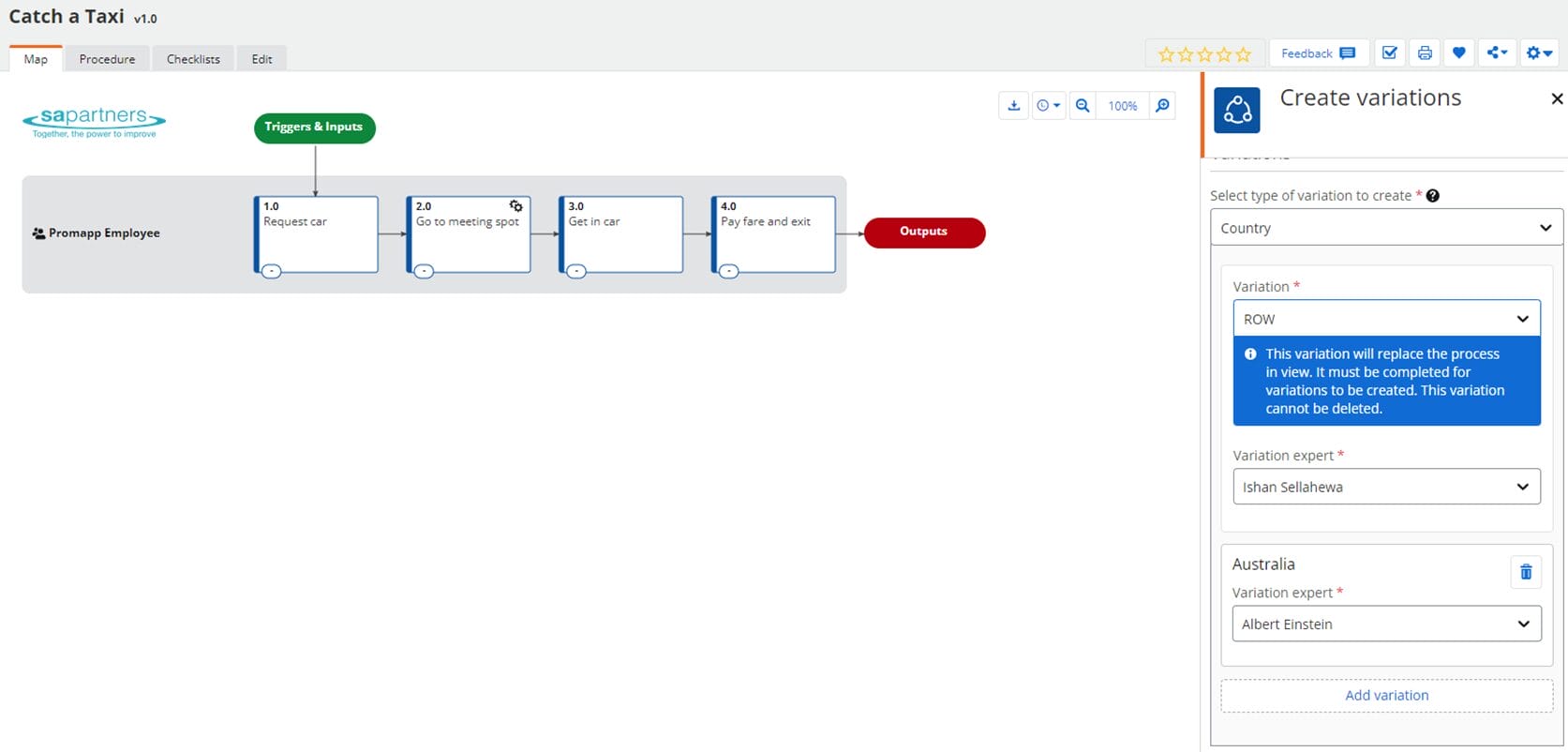
What I’ve done here is specified that the process that I have already mapped is our ‘Rest of the World’ process and have now added a new variation for Australia. We have also introduced a new layer of governance. Our process has a Global Process Owner and Global Process Expert who are ultimately responsible for the performance of the process across all geographies, but now we have also introduced ‘Variation experts’ who are SMEs at the variation level.
The next part is to document the As-Is Australian process, capturing exactly how it varies from the ROW. If the Australian process is completely different from the ROW, you could build it from scratch, however in practise what we often find is that processes are similar to a point. Rather than starting from scratch then, using Nintex Process Manager, I would compare the Australian variation with the ROW and select the common elements:
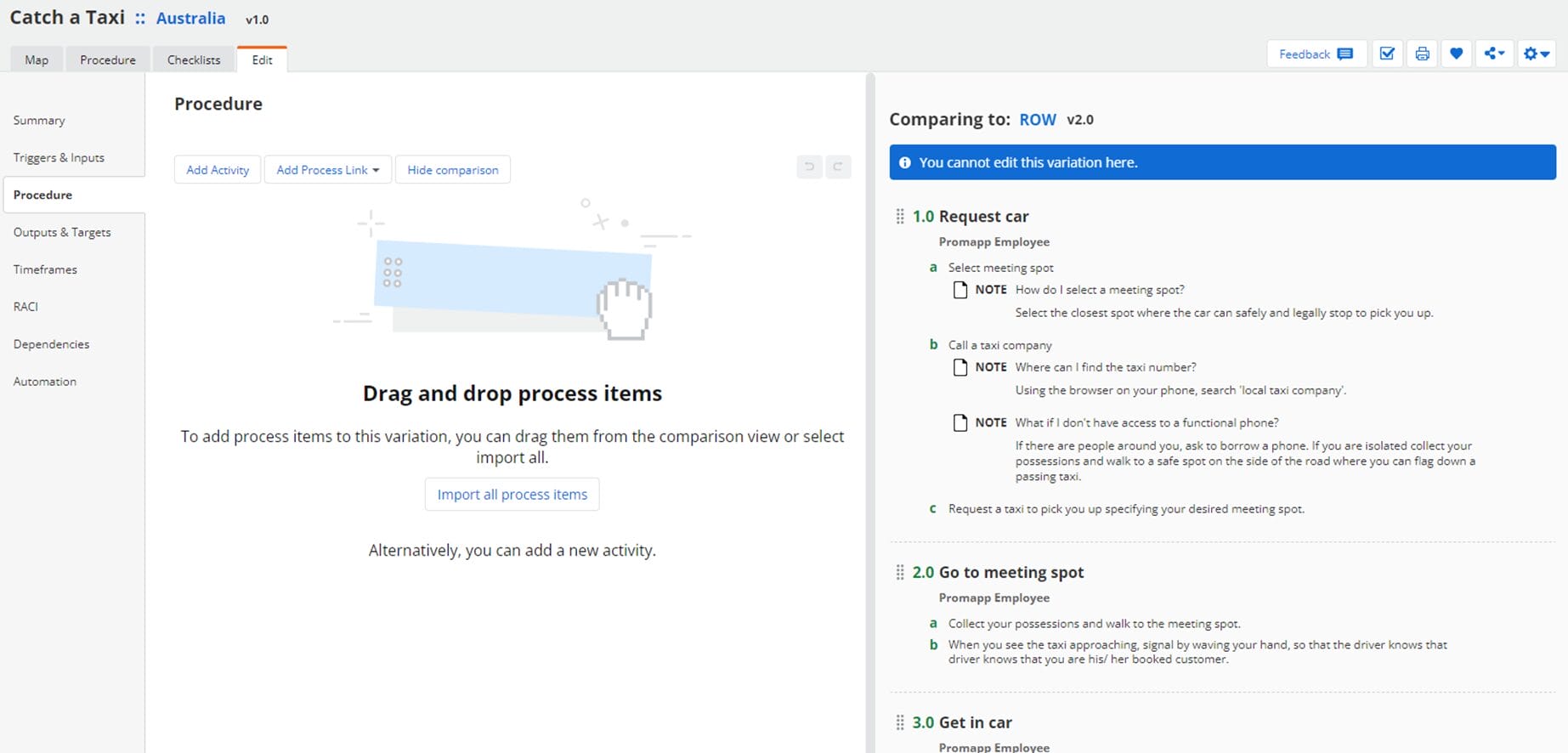
In this case, I might start by importing all of the process items from ROW to my Australian process and then tweak them. Specifically, I am going to capture the variation that, unlike the ROW who catch Taxis, in Australia Ubers are caught (when I make the changes, the differences are clearly highlighted in Nintex Process Manager as shown below). Additionally, I’ve also added two new activities to the end to show that in Australia, once the ride has been completed, they must rate the driver and then submit an expense report.
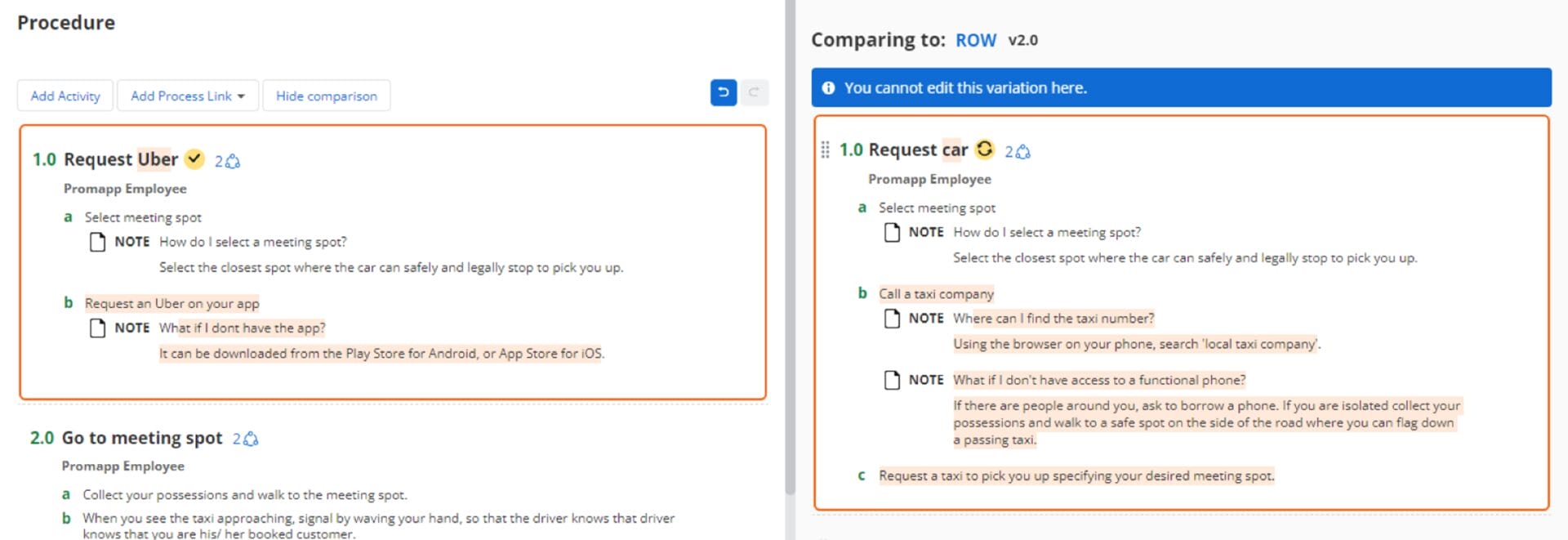
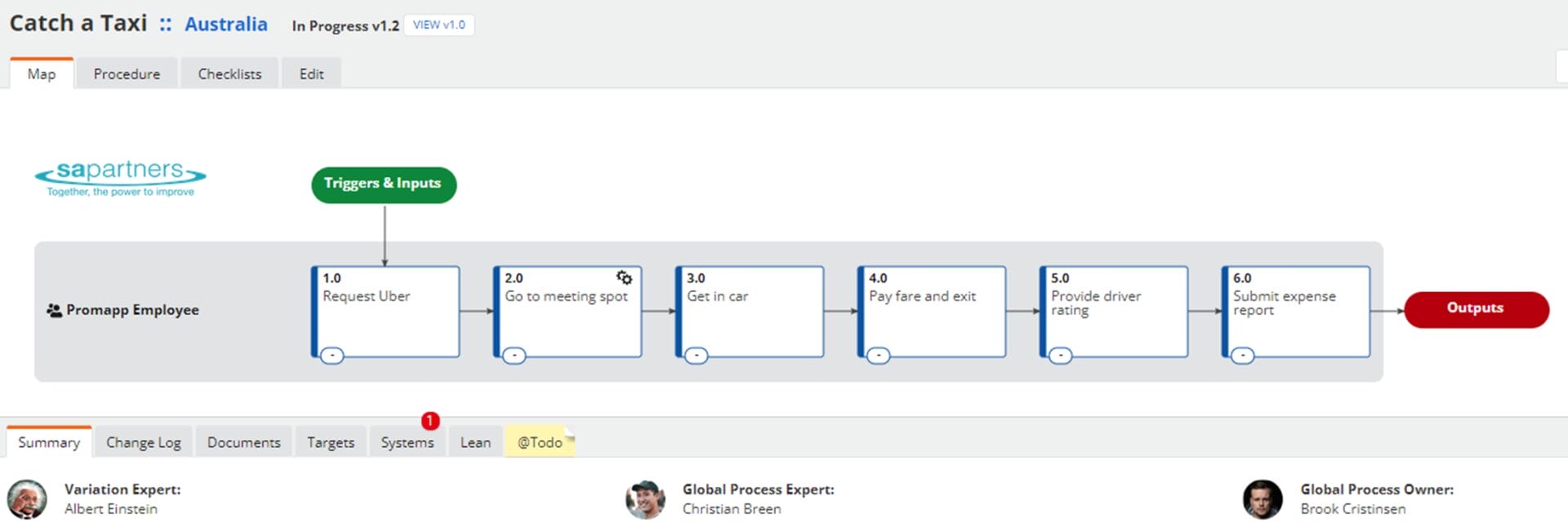
Step 2: Understand and assess your variations
If I then toggle back to the ROW variation, you will notice that this variation hasn’t changed.
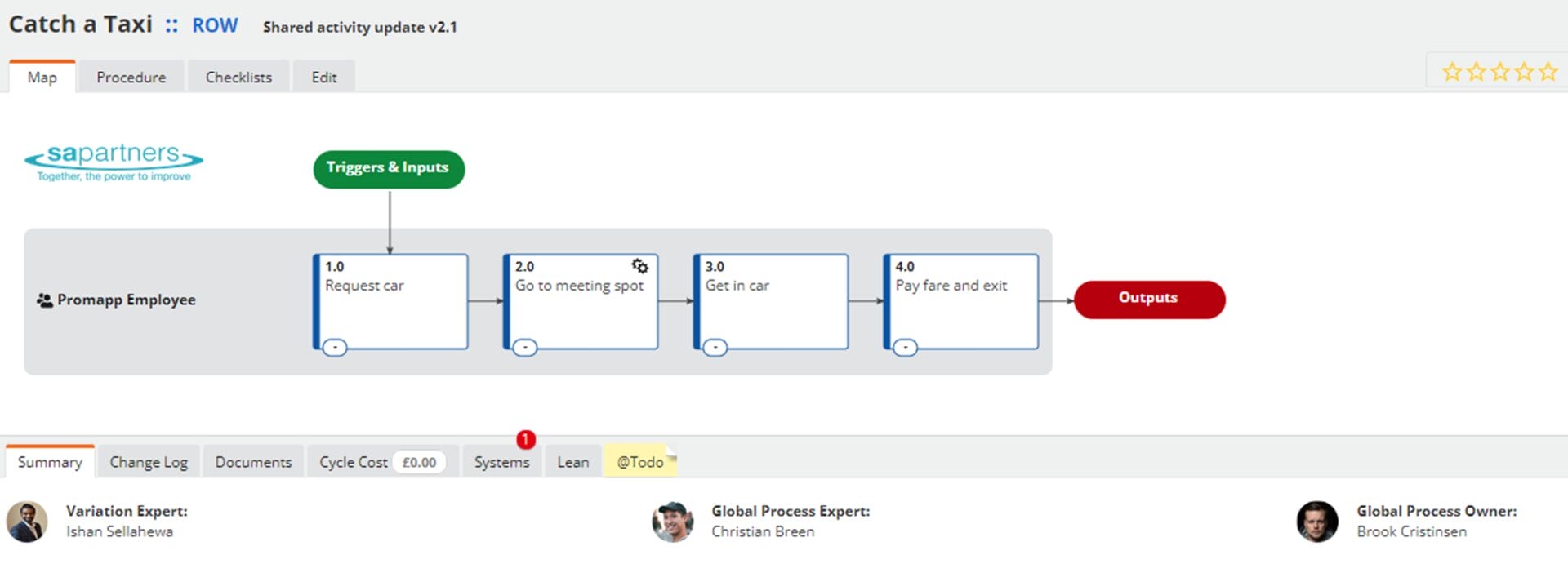
This is important, just because the Australian process is updated shouldn’t mean that the ROW process should be updated too. This comes down to the Variation Expert of ROW (in this case me) to assess how Australia performs its process differently from the ROW and then decide if ROW needs to maintain its variations or if we should standardise.
You may notice that next to the title of the ROW process it says ‘Shared activity update’ which is telling me that one of the shared activities has been updated in another variation (as the Variation Expert I would also have received a dashboard notification).
When I edit the ROW variation, I am clearly shown what changes have been made and then I have the ability to either reject or accept them.
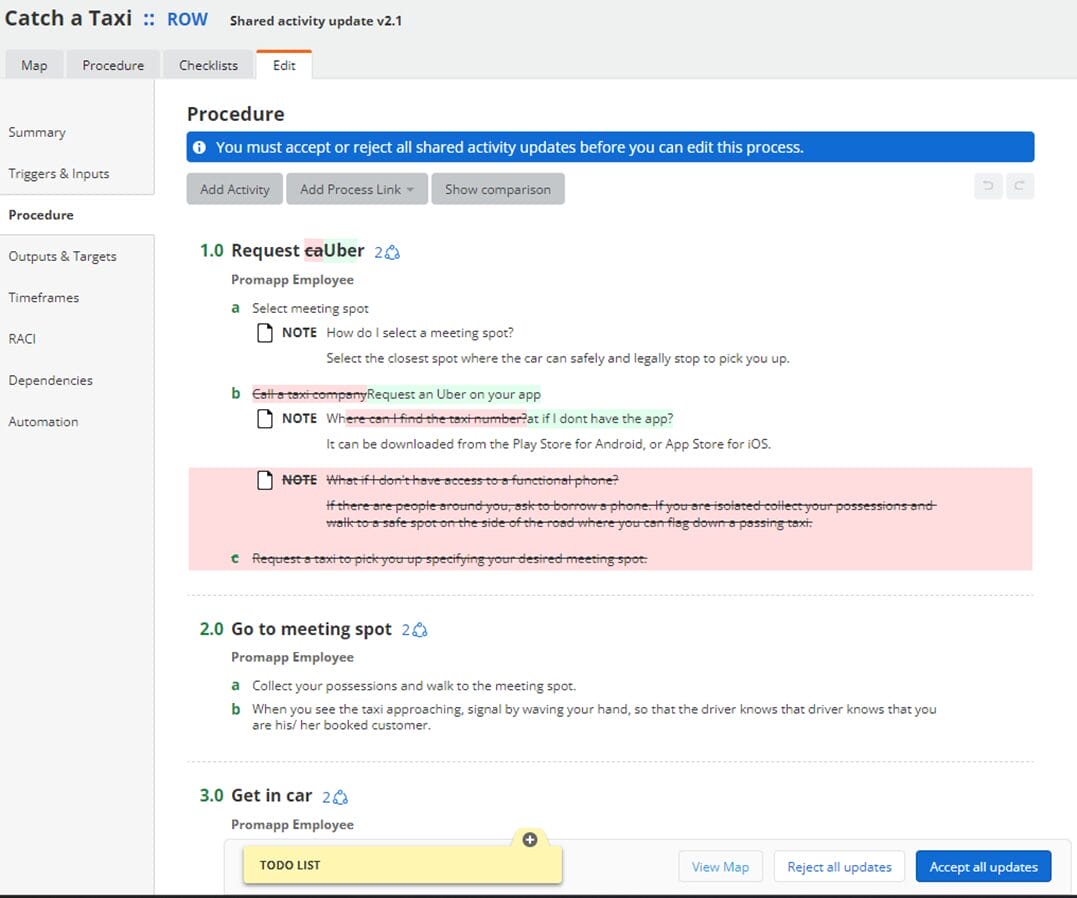
In this case, I might decide that due to our UK and American insurance policies, staff are not covered if they catch an Uber, so I’m going to reject that change and maintain the variation. Equally, as we are not catching Ubers, I don’t need to rate the driver but I think submitting an expense report is a good idea, so I’ll bring that new activity over to my ROW process.

Step 3: Drive Change
Now that I’ve made the change, as the Variation Expert, it’s up to me to ensure that this new process is performed (i.e. that staff in non-Australian locations now also submit an expense report). This will be helped by Nintex Process Manager itself – as soon as I publish the change all stakeholders will receive notifications explaining the change which they need to acknowledge, but it is also up to me to monitor the situation and ensure that the lived process moves to the new version of the documented process and take corrective action where it does not.
In this case, we’ve understood our variations, standardised as much of the process as we could, but ultimately decided that we can’t standardise the entire process and some level of variation is required. This may change over time, perhaps in the future we’ll get a new insurance provider who covers Uber rides, at which point we will archive the variations and just have one ‘Catch a taxi’ process.
To summarise:
- Don’t just jump to trying to create one variation-free process, at best this will result in a process document that is ignored, at worst it will result in processes no longer being compliant with local rules, regulations, and/ or customer expectations
- Consider variation ownership – each variation needs to have an expert who can assess a variation and make a decision to standardise or not
- Don’t just change your process documentation and hope that you achieve standardisation, ensure that everyone is aware that their process has changed, monitor what is happening in the real world, and take corrective action as needed
- Appreciate that this is a moving target, as the landscape changes you may need to add/ remove variations
Taking this approach will allow you to find the balance between flexing to meet market conditions while standardising to drive efficiencies and share best practises.
In this post, I have used Nintex Process Manager as the process management tool. For more information on how it can be used to simplify variation management (or process management in general) please let me know.
Digital Transformation Business Manager
